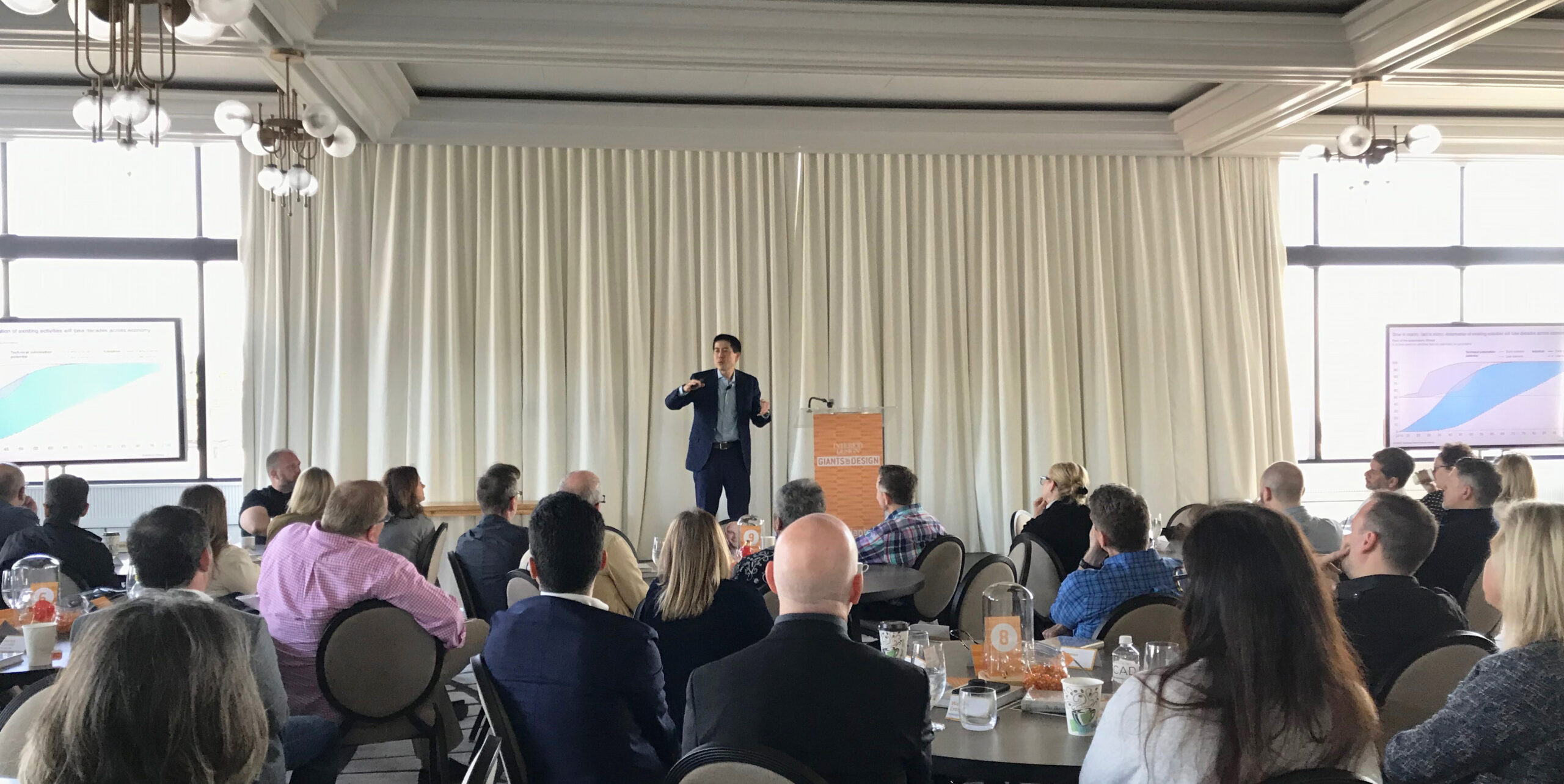At Giants 2019, McKinsey Global Institute Breaks Down the Robotics Revolution

The Giants of Design programming is known to strike a balance between of-the-moment practical and theoretical topics relevant to top designers in the field. This year was no exception. Michael Chui, a partner at business and economics research firm McKinsey Global Institute, presented on the ever-increasing role of robotics in the workplace.
Chui, who describes his job as akin to “a private-sector professor,” is tasked with leading McKinsey’s research “on the impact of long-term technology trends (such as artificial intelligence, robotics, automation),” as he explained to the Giants.
“If you look at the news, we keep hearing about how artificial intelligence (AI) is not only as good as, but better than humans at a plurality of different tasks. That said, this isn’t a new phenomenon. The term ‘artificial intelligence’ was first coined over half a century ago—in the 1950s! We’ve seen this discussion before,” explained Chui.
Much of his presentation centered around de-mystifying how these topics are often sensationalized by media versus their real-word implications for fields like design.
“We want to take the rigor that we can take to other analysis, such as when we do client work, and take seriously what might be the potential of these technologies to do the work that people do in the global economy,” he said, going on to explain the firm’s in-depth research of every occupation known to the global economy to quantify how the potential of robotics compares to human productivity.
“What we discovered was how little time people spend doing what their job title suggests they should be doing,” he said. “Almost every occupation is comprised of 20 to 30 different activities,” explained Chui. “Roughly 50 percent of the time we pay people to spend working in the global economy, the activities they’re doing have the theoretical potential to be automated by adapting technology which exists today. That doesn’t mean we’ll have 50 percent unemployment tomorrow.”
According to Chui, words like “theoretical” and “potential” are important to use in order to avoid oversimplifying what technology could mean for the global economy—which often happens. Rolling out robotics to take over 50 percent of daily activities for any given occupation requires a massive investment in specialized technology. Furthermore, specialized training of both the technology and the experts charged with training the technology itself, makes it extremely unlikely that corporations will view robotics as an objectively cheaper investment than human employees.
“These technologies are not omnipotent,” said Chui. ““We have a new set of robotics, a new set of technologies, that are designed to work side-by-side with human beings. Those are some of the things that are changing.”
> Check out our full coverage of Giants of Design


